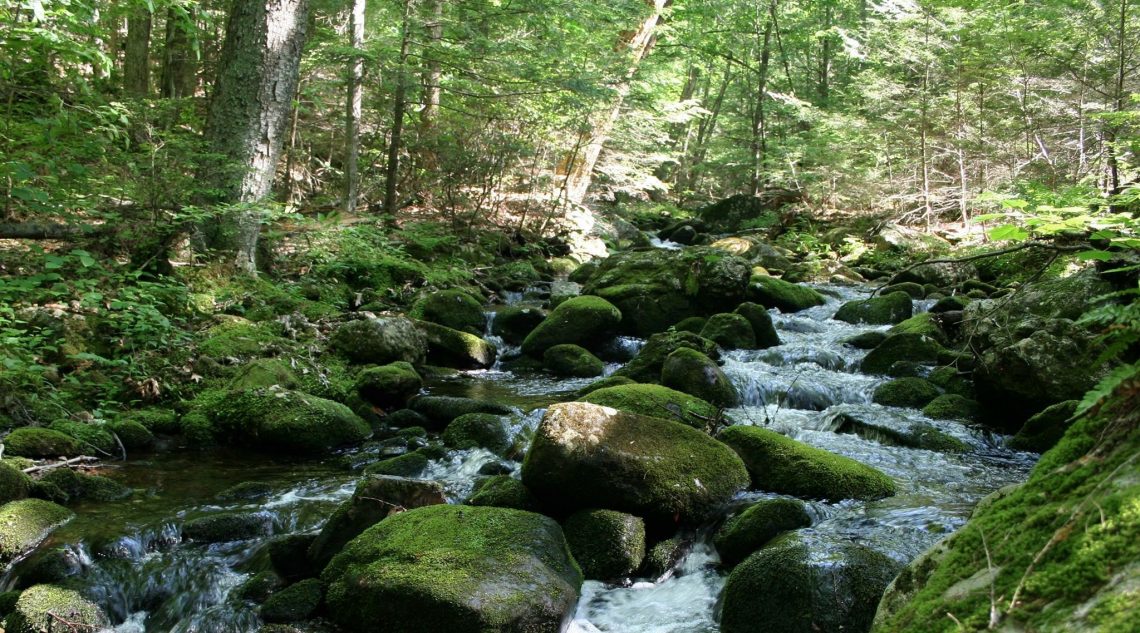Want to Decrease Stress & Boost Your Immune System? Try Forest Bathing!

Want to Decrease Stress & Boost Your Immune System? Try Forest Bathing!
First published September 28, 2020
by Nadine Mazzola, Award-Winning Author of Forest Bathing with your Dog and Certified Forest Therapy Guide
Around me the trees stir in their leaves
and call out, ‘Stay awhile.’-“When I am among the trees,” poem by Mary Oliver
It is difficult to explain forest bathing in words alone. It is experiential and sensory. It is feeling, with all of one’s abilities, and leaving oneself open to the world around you. It is thoroughly immersing oneself in nature using all five senses. Inspired by the Japanese practice of Shinrin-yoku (translated as either “forest bathing” or “bathing in the atmosphere of the forest”), forest bathing has its roots in ancient Shinto and Buddhist practices.
During the 1980s forest bathing surfaced in Japan as a pivotal part of preventive health care, healing, and treating stress. Research has demonstrated that spending time under the forest canopy decreases stress, anxiety, depression and rumination, and increases heart rate variability, concentration, memory and creativity. It boosts our immune system and naturally activates the nervous system’s relaxation response restoring us to the parasympathetic state effortlessly. Research also shows that a slow wander or sitting is the most effective pace for treating stress. (If you want to read more about the many human-nature-health connections, check out Florence Williams’ book, The Nature Fix: Why Nature Makes Us Happier, Healthier, and More Creative, for a great summary of research.)

The author practicing her craft
So, how does forest bathing differ from a hike in the woods, a nature walk, or meditation? Well, the primary focus of many naturalist walks is to educate—enjoyable and important, but very different from forest bathing’s sensory experience. Similarly, when we take a walk or hike in the woods, the primary focus is often exercise or reaching a certain vista—also enjoyable and beneficial, but very different from forest bathing’s “the destination is here, not there” focus. Some ask if forest bathing is similar to meditation, and although it is equally beneficial in the ways that meditation changes our brain patterns—inviting improved attention, memory and relaxation—it can encourage a freedom and effortlessness that invites us to notice our surroundings and welcome any pleasure, playfulness, or curiosity that is alive inside us. As Melanie Choukas-Bradley, author of The Joy of Forest Bathing: Reconnect with Wild Places & Rejuvenate Your Life said:
It’s all about pace and awareness. On a forest bathing walk you slow way down, breathe deeply, and tune into your surroundings with all your senses. It’s a very immersive experience and it’s hard to describe what makes it so special. When you grow quiet and open your heart, mind and five senses to all that’s around you, it’s extremely restorative. Your “to do” list and the day’s headlines simply cease to exist when you’re on forest bathing time. I have a hard time meditating in a room but nature helps me to achieve peace and serenity.
From “Forest Bathing 101: An Interview with Melanie Choukas-Bradley” by Leigh Stringer
Here are some tips for forest bathing on your own:
Be Safe: Keep track of where you are. Bring water and an extra layer if it is cool. Know what poison ivy looks like and do a quick tick check before you get in your car and again when you get home. Find a place that both is and feels safe.
Where to Go: Anywhere!: A nearby trail, park, meadow or even your yard or garden. Anywhere where people and nature meet.
When to Begin: Give yourself some time to just arrive. Do what feels right for you. Look around, stretch, or burn off some energy first, then allow your body to find a place to sit or stand that feels good. You may naturally slip into a slow wander and start that way. That’s your starting point.
How to Begin: Consider how best to keep your phone from interrupting you. There are a variety of options. Decide what will be best for you.
Begin by simply setting the intention to begin. Be clear with yourself that you are going to forest bathe for a time and that you will flow with whatever the forest offers. Let yourself use your senses to follow your curiosity and enjoyment.

Exploring the Senses and Slowing Down: Pause to listen, smell, and touch. Look around. What catches your eye? Look at things up close. Linger and explore further. Saunter. The destination is here. Don’t have an agenda. Let your body, enjoyment and curiosity guide you. As poet Mary Oliver writes in her poem “Wild Geese”:
Let the soft animal of your body love what it loves.
Wander slowly. Pause from time to time. Notice your surroundings with your senses. Look closely at a leaf, touch a rock, smell the variety of scents. Sip the air. Does it have a taste, a texture or something else we don’t quite have words for? Listen to the other sounds around you: birdsong, water running, leaves in the breeze.
I have met with but one or two persons in the course of my life who understood the art of Walking, that is, of taking walks—who had a genius, so to speak, for sauntering
Henry David Thoreau, from his essay “Walking”
Perhaps sit for a while and notice how the behavior of the birds and other animals change when they become used to your presence.
If you go with others, consider making an agreement to spend some time in silence.
If you go with kids, make a game out of resisting the urge to talk.
If you go with your dog, Nadine has some great tips on her website and in her book to make the experience better for both of you.
Make things more impactful and build community by sharing your experiences with each other afterwards.
How Long to Forest Bathe: This depends on how much time you have. A minimum of twenty minutes is recommended, but if you only have a brief moment to spare, then that is what you have. You can also spend hours forest bathing. Time seems to stand still when you immerse yourself in the practice.
How to Finish a Forest Bathing Session: Set an intention, finish, and mark it in whatever way feels right. Allow the land and the moment to guide you.
It’s a Practice: When done regularly—once a week, once a month, every day, or somewhere in between —forest bathing becomes a practice that deepens with time and leads us to form or reconnect to our own relationship with a particular place.
Paying attention is a form of reciprocity with the living world, receiving the gifts with open eyes and open heart.
Robin Wall Kimmerer, from her book Braiding Sweetgrass: Indigenous Wisdom, Scientific Knowledge and the Teachings of Plants
Do I need a Guide? No, and yet—being aided by a trained and certified Forest Therapy Guide is a unique experience that can exponentially support connection and relaxation. I find this to be true when attending any class led by an experienced professional. The time and activities are held for the group by the facilitator and there is a community aspect of sharing the experience with others. Solo forest bathing can also be a profound and deeply restorative experience—a practice that deepens with time and repetition.
In July 2020, Nadine led a virtual event with Hilltown Land Trust on forest therapy and forest bathing. If you walk with your dog, check out Nadine’s blog post “Tips for Forest Bathing with Your Dog” on her website for some great tips.
About the Author:
Nadine Mazzola is a Certified Forest Therapy Guide and author of the award-wining book Forest Bathing with Your Dog. This quadruple-award-winning book combines the deep connection we have with our dogs and our connection to nature by weaving together the practice of forest bathing with our practice of walking our dogs. The book has many practical tips and heartfelt stories, bringing more joy and depth to being with our canine companions. Nadine also leads a variety of guided forest bathing programs from individual walks to consulting with organizations. She may be reached through her website: nenft.com.

 New England Nature and Forest Therapy Consulting
New England Nature and Forest Therapy Consulting